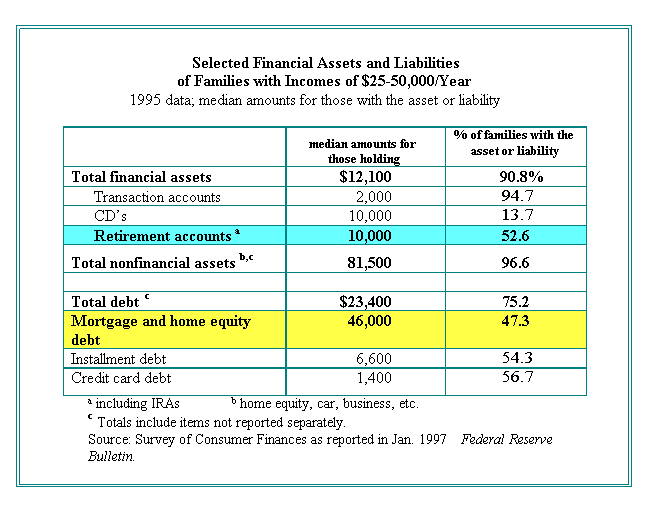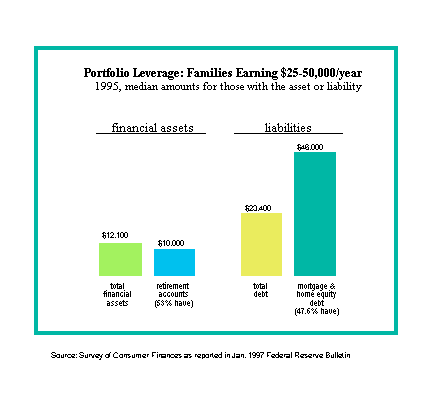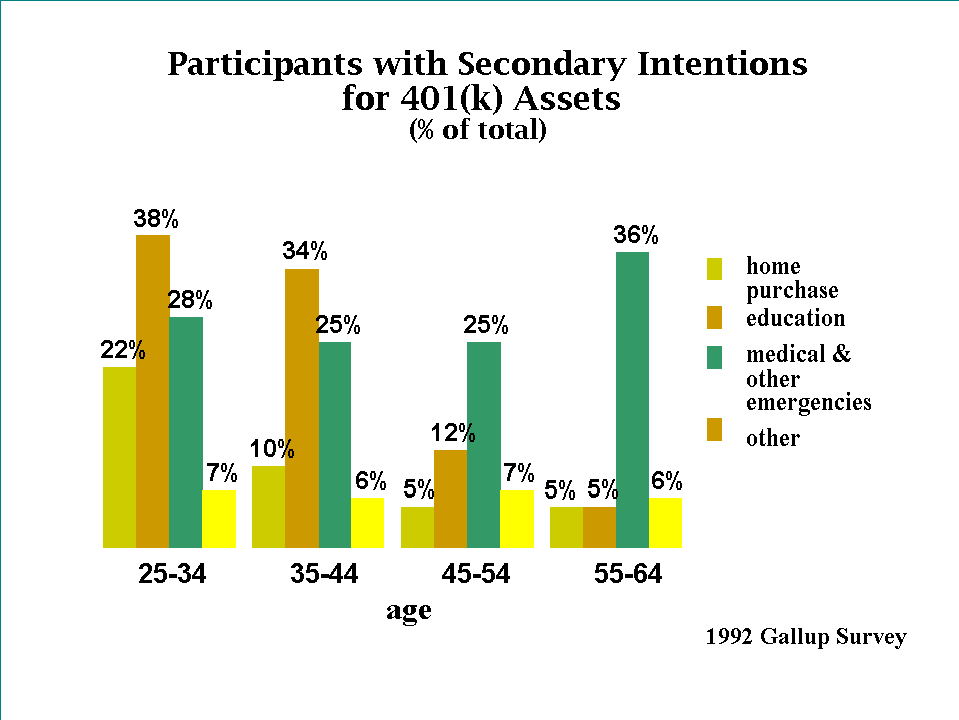LANDMARK STRATEGIES
PO Box 804
Whately, MA 01093
413-665-4638
|
|
LANDMARK STRATEGIES |
|
Wanted: A defined contribution theory of asset allocation by Judy Markland President, Landmark Strategies | |
| Plan Sponsor, May 1998 |
The asset allocation models now used for 401(k) and other defined contribution plans routinely utilize basic risk/return portfolio theory. But should they? Modern portfolio theory was originally developed for and by institutional investors. Asset allocation models work extremely well in a defined benefit context, but there are significant differences in defined contribution plan risks and investor time horizons that make their usage highly suspect for 401(k) portfolios.
Standard asset allocation theory primarily considers asset risk and is based on assumptions of a long time horizon, normally distributed asset returns, and consistent investment behavior in bull and bear markets. None of this is relevant in the world of 401(k) investing. Plan sponsors and investment providers urgently need to focus on the unique aspects of defined contribution investing. We need a meaningful defined contribution portfolio theory.
Relatively speaking, defined benefit investors' task is easy. Their portfolios exist solely to fund retiree benefits. They can diversify their liability risks - like early retirement and mortality - across a large number of participants, making the size and timing of future benefit payments quite predictable. And the plan is legally independent of the sponsoring employer, so any financial difficulties that the investor experiences do not impact the benefit stream.
All of this means that the plan sponsor can virtually ignore plan participants' own financial risks and the firm's own business risks when it establishes the optimal defined benefit portfolio. Only the portfolio's asset risks need be considered. Not surprisingly this has become the standard approach for asset allocation.
But defined contribution plans have both a different risk profile and a less specific funding role. Participants have no way to diversify their benefit risks, nor do they have any say in the timing of layoffs or early retirement programs. Even more critically a 401(k) account isn't insulated from any external disruptions to the participant's finances.
Nor should it be. Defined contribution assets may be called upon to cover any financial emergency, be it job loss, fire, or a major health crisis. This is critical, since far too few 401(k) plan participants have any significant savings or contingency funds outside their 401(k) accounts. But these ever-present and undiversifiable benefit risks suggest a more conservative investment approach than is typical for a defined benefit plan, all else being equal. Stable value funds and other assets with good returns and little principal risk should play a larger role than plan participants are generally advised to give them.
More critically, the need to consider the liability side of the defined contribution plan undermines the asset allocation model's key assumption of a long-term investment time horizon for retirement assets. Defined contribution assets are only one piece of a complex financial profile - typically, a highly leveraged one. The typical 401(k) participant's household has only about $12,000 in financial assets, and for the 50% with retirement accounts, almost all these financial assets are in funds theoretically held for retirement, according to the Federal Reserve.

Yet these same households hold $23,000 of debt on balance, substantial portions of which are mortgage debt. Preserving home equity for retirement is an important goal of defined contribution investors, yet how many defined contribution participants have access to asset allocation models that explicitly incorporate either home equity assets and their inflation protection or the financial leverage of the mortgage?

Do not underestimate the role of defined contribution assets in supporting contingency needs. Financial planners usually suggest that their clients keep a minimum of three to six months' salary in savings-type assets with no principal risk before assuming any investment risks. Few defined contribution participants have this type of reserve outside the plan. They cannot assume that they will continue to hold all their defined contribution assets for the long term. To invest prudently for retirement while protecting themselves against contingency risks before then, they need plan options that provide both good principal safety and good returns.
Additionally, 401(k) participants often have secondary, near-term uses in mind for their funds.

A 1992 Gallup survey showed that, in addition to saving for retirement, 38% of participants aged 25-34 and 34% of those 35-44 also intended to use their plan assets for education spending. Twenty-two percent and 10 percent respectively were also saving to buy a house. These alternatives also represent investments in future retirement security, but ones with a much shorter investment time horizon than their retirement.
Individuals are different.
Yet a long time horizon is a key assumption of modern portfolio theory and asset allocation models, since the expected return only materializes over several market cycles. MPT assumes that the investor's time horizon is long enough for the average returns to be realized. It doesn't work well over shorter periods of time, since asset returns actually are not normally distributed are skewed towards large losses. Covariances of returns - the extent that returns for various assets or asset classes move in tandem - are highly unstable over short periods of time, weakening their utility as a measure of risk diversification.
For instance, while annual bond and stock returns had only a .38 correlation from 1950-96, the covariance was .77 from 1991-96. Funds created specifically to provide diversification, such as balanced and life-cycle funds, really offered little portfolio risk reduction to participants during most of the 1990's.
Asset allocation models also assume that risk is defined as the volatility of returns and that the investor optimizes the portfolio over the long-term, behaving similarly whether assets are gaining or losing value. However, studies of individual investment behavior show that their portfolio decisions are often suboptimal.
We tend to compartmentalize our portfolios, rather than looking at them as an integrated whole - often paying more on the car loan than we're earning on the Christmas savings account, for instance. We are loss averse rather than risk averse, often willingly incurring more risk to avoid a loss but only reluctantly parting with funds once we actually hold them. We evaluate choices one and a time and relative to the current reference point, not the longer-term outcome. Each of these behaviors differs from the basic assumptions underlying modern portfolio theory.
Unless investors have the luxury to hold assets for the long term and will ride out investment cycles equally on both the up and down sides, realized returns will not bear any relationship to those modeled, even if future market behavior mirrors the past.
The ideal asset allocation model for a defined contribution plan will consider the participant's entire portfolio - including home equity risks and returns and the leverage from mortgage and other debt - and also take account of participant contingency risks and pre-retirement investment time horizons. The focus of the model will be on minimizing near-term downside risk while optimizing longer-term returns.

Return to Landmark Articles and Speeches 
Return Home